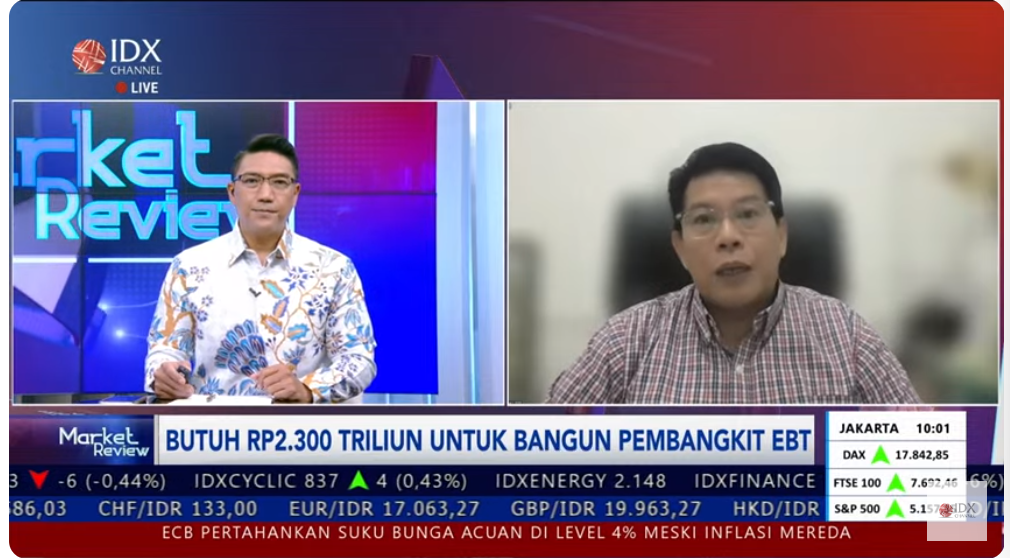Jakarta, March 8th, 2024 – Indonesia’s energy transition commitment officially began three years ago when the State Electricity Company (PLN) issued the 2021-2030 Electricity Supply Business Plan (RUPTL) which targets increasing renewable energy capacity as one of the prerequisites for achieving net zero Indonesia’s emissions in 2060, specifically the electricity sector in 2050.
During the Market Review session, Friday 8 March 2024, Fabby Tumiwa, Executive Director of the Institute for Essential Services Reform (IESR) stated that the development of renewable energy is a necessity. The government, through a number of policies such as RUPTL 2021, and Presidential Decree 112/2022 has announced additional renewable energy capacity as well as a commitment to no longer build new PLTUs except those already in the contract process.
“These commitments must be translated to executable technical and economic plans. Therefore, the RUKN and RUPTL revision process which is currently underway is very important,” said Fabby.
In the 2024 – 2040 RUPTL, PLN plans to increase its renewable energy generation capacity by up to 80 GW. This plan will have the consequence of a significant increase in renewable energy from currently around 9 GW to 70 GW.
Fabby added that this enthusiasm and ambition needs to be monitored by the public considering that the government’s record for increasing renewable energy capacity is always below the target. In pursuing the target of a 23 percent renewable energy mix by 2025, Indonesia has not shown the expected progress. Until 2023, the renewable energy mix will only be 13 percent. This makes the remaining two years a challenge for accelerating renewable energy.
The required cost for building renewable energy plants, which reaches USD 152 billion (equivalent to 2,300 trillion rupiah) by 2040, is in the spotlight. This figure is considered a realistic figure by Fabby, considering that this figure represents investment needs including the need for building renewable energy plants as well as building transmission and distribution networks.
“The figure of USD 152 billion is a realistic figure at this time. We also have to understand that technology continues to develop, it is very possible that in the future this investment need will gradually decrease according to technological developments,” explained Fabby.
Fabby highlighted the government’s intention to involve the private sector more. To invite greater private investment, regulatory improvements are needed, including the National Energy Policy in line with the electricity sector’s net zero emission target in 2050, a review of electricity purchase prices from renewable energy generators, and a review of the current electricity tariffs.

